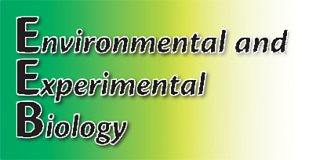
On-line: ISSN 2255–9582

| Faculty of Biology, University of Latvia | ||||||

|
Hard copy: ISSN 1691–8088
On-line: ISSN 2255–9582 Environ Exp Biol (2024) 22:71–78
|
|||||

|
About the Journal | Retractions | Open Access | Author Guidlines | Current Issue | Archive |
|
Environmental and Experimental Biology |
Environ Exp Biol (2024) 22:71–78 |
Mangroves are unique ecosystems. As they are present in a transition zone, they harbour a variety of organisms, which include microorganisms, aquatic as well as terrestrial organisms. Being present in an ever-changing and adverse environment, mangroves have developed several adaptations that make them unique. These unique features have been exploited for the isolation of various useful compounds from mangroves. The organisms associated with the mangrove ecosystem will also be well equipped to survive such extreme conditions. Microorganisms such as bacteria, fungi, actinomycetes, algae etc, survive in this changing environment, and they might be producing certain metabolites as a part of their survival mechanism, which can be exploited for the production of various compounds that are useful to mankind. Mangrove microorganisms can be used as an important source of food, medicines, enzymes, antimicrobials etc.